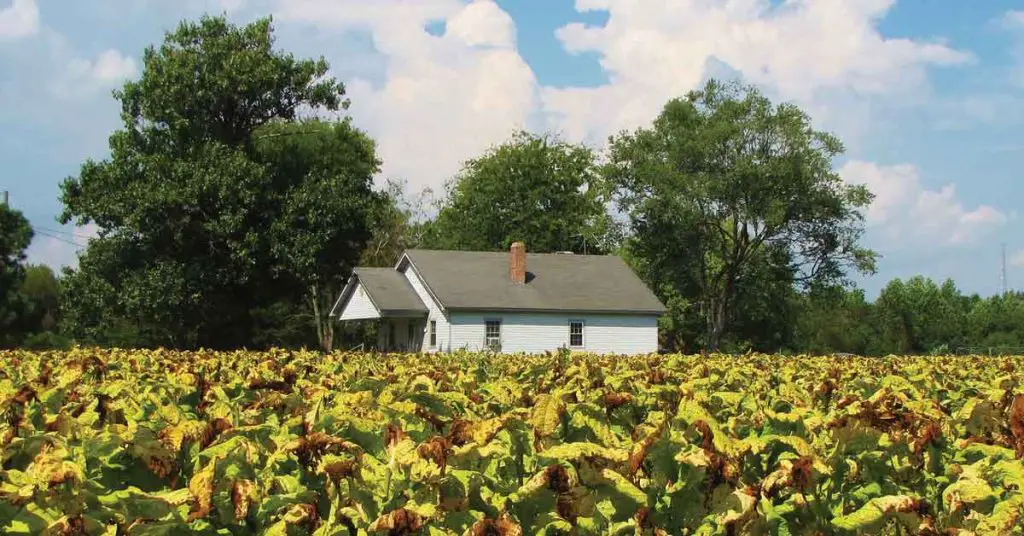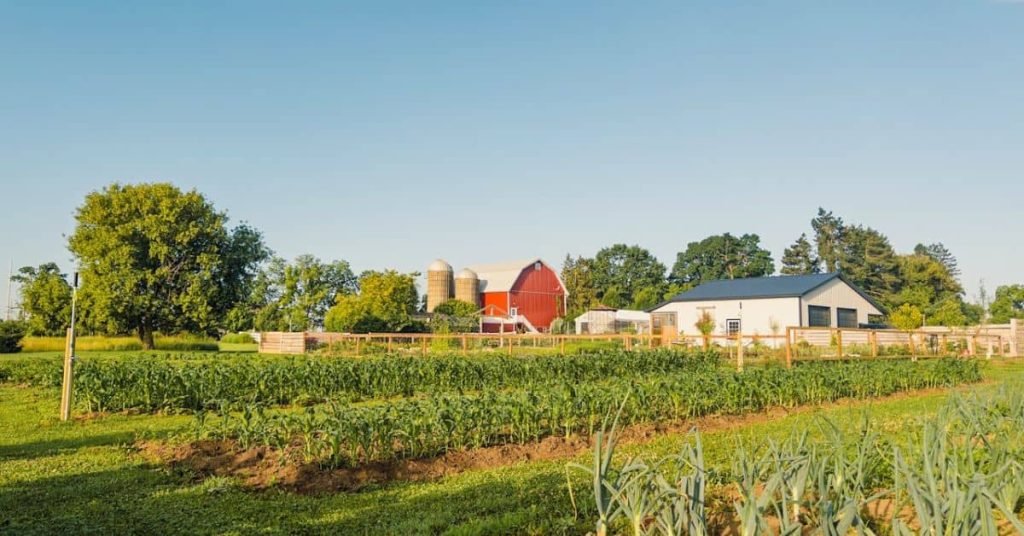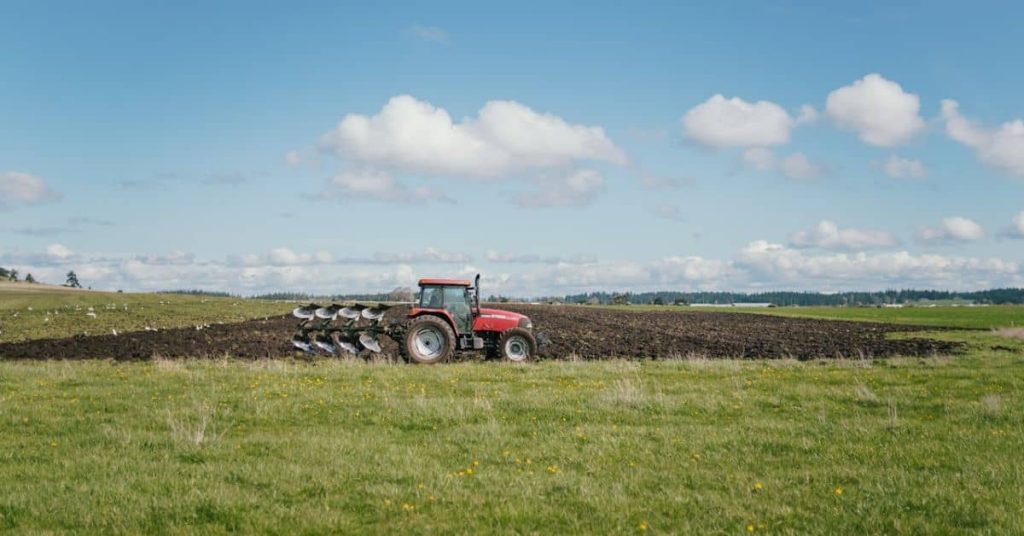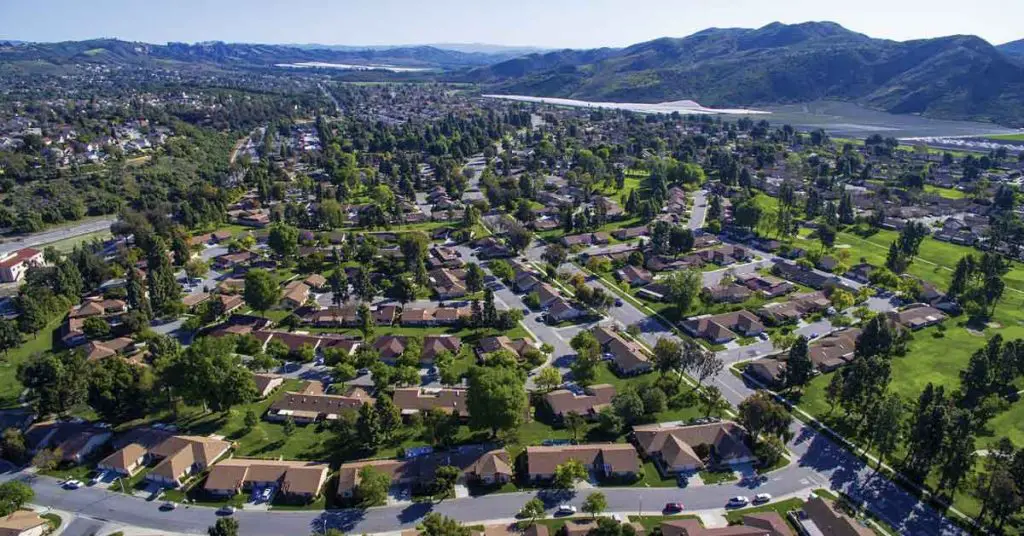Introduction to Homesteading in Colorado
Nestled amidst the majestic Rockies and sprawling plains, Colorado presents a unique tapestry for homesteaders seeking a blend of rugged independence and serene beauty. “Homesteading in Colorado: Mastering Self-Sufficiency in Mountain Living” is your compass to navigating this fulfilling lifestyle, where the spirit of the West meets the ethos of sustainable living.
In Colorado, homesteading is not just about staking a claim on a piece of land; it’s about embracing a lifestyle that harmonizes with the natural elements. The state’s diverse landscape, from its snow-capped peaks to its fertile valleys, offers a plethora of opportunities for those willing to adapt and innovate. Here, the challenges of mountain living spur creativity, and the rewards are as vast as the Colorado sky.
This guide will walk you through the essentials of establishing a homestead in the Centennial State, from leveraging the Colorado Homestead Exemption to mastering high-altitude gardening and ensuring sustainable water use. We’ll explore the nuances of off-grid living in the Rockies, the importance of community support, and the innovative practices that make homesteading in Colorado a uniquely rewarding adventure.
Whether you’re drawn to the tranquility of the mountains or the vibrant community of fellow homesteaders, Colorado offers a backdrop for self-sufficiency and resilience. Join us as we delve into the heart of homesteading in Colorado, where every day brings new lessons in living closely with the land.
Understanding the Colorado Homestead Exemption
Navigating the financial and legal landscape is a crucial aspect of establishing a homestead in Colorado. Among the various laws that impact homesteaders, the Colorado Homestead Exemption stands out as a critical element for financial planning and property protection. This section delves into the nuances of the Colorado Homestead Exemption, elucidating its benefits and implications for those embarking on the homesteading journey in the Centennial State.
Navigating Property Laws and Benefits
The Colorado Homestead Exemption provides a protective measure for homeowners, safeguarding a portion of their home’s value against creditors. Understanding the scope and application of this exemption is essential for homesteaders, particularly in planning for financial stability and security.
Core Aspects of the Homestead Exemption
- Protection Offered: The exemption shields up to a certain amount of a home’s equity from most creditors, offering financial relief in the event of bankruptcy or debt collection. The specific protected amount can vary, so it’s important to consult current state laws for the most accurate figures.
- Eligibility Requirements: To qualify for the exemption, individuals must occupy the property as their primary residence. The exemption applies to both the dwelling and the land, provided the land is used as part of the homestead.
- Limitations and Considerations: While the exemption offers significant protection, it does not cover all types of debts. Taxes, mortgages, and liens for home improvement work are typically exempt from protection.
Applying for the Homestead Exemption
The process to claim the homestead exemption involves several steps, including:
- Filing Requirements: Homesteaders must file a declaration of homestead with the appropriate county office. This document officially claims the exemption for the property.
- Documentation: Applicants may need to provide proof of ownership, residency, and identification to satisfy the filing requirements.
- Renewal and Changes: Homesteaders should stay informed about any renewal policies or changes in the law that could affect their exemption status.
Strategic Considerations for Homesteaders
- Estate Planning: The homestead exemption can play a significant role in estate planning, offering a way to protect home equity for heirs.
- Financial Planning: Understanding the protections and limitations of the exemption can aid in comprehensive financial planning, helping homesteaders make informed decisions about debt, investment, and property improvements.
The Colorado Homestead Exemption is a valuable tool for homesteaders, providing a layer of financial protection that can contribute to the stability and sustainability of homesteading endeavors. By thoroughly understanding and effectively navigating this exemption, homesteaders can enhance their resilience against financial challenges, ensuring their ability to thrive in Colorado’s diverse landscape.
High Altitude Gardening in Colorado
The unique climate and elevation of Colorado present both challenges and opportunities for homesteaders, especially when it comes to gardening. High altitude gardening in Colorado requires a different approach to ensure a bountiful harvest. This section delves into the specialized techniques and considerations necessary for thriving gardens in the mountainous regions of the state.
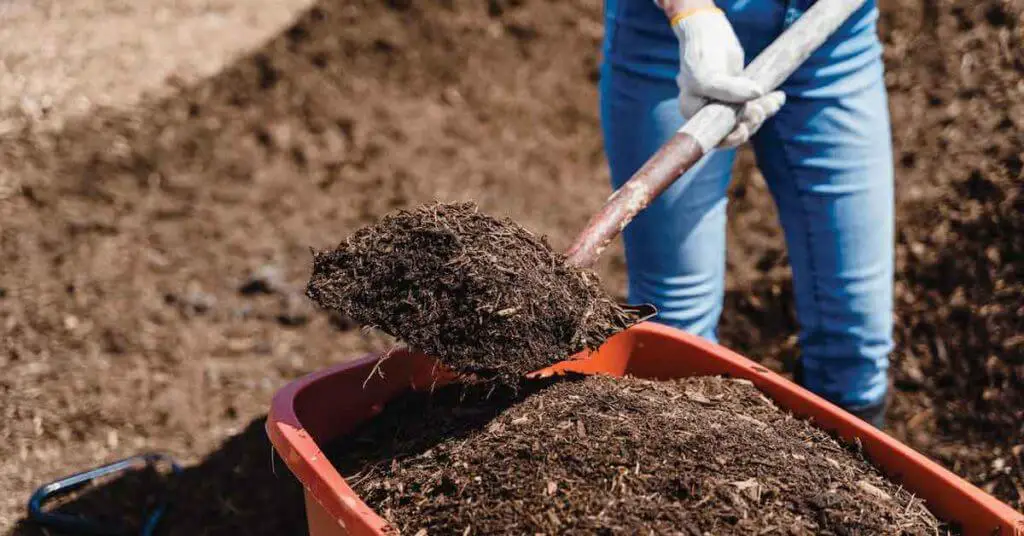
Adapting Agricultural Practices to the Mountains
Understanding the High Altitude Environment
- Shorter Growing Season: The higher elevations in Colorado result in cooler temperatures and a shorter growing season. Selecting fast-maturing crop varieties is essential to ensure harvest before the first frost.
- Intense Sunlight and UV Exposure: Plants at high altitudes receive more intense sunlight and ultraviolet radiation, which can be both beneficial and detrimental. Utilizing shade cloths or strategic planting can protect sensitive plants.
- Cooler Night Temperatures: Even in summer, nighttime temperatures can drop significantly. Employing methods to retain heat, such as using mulch or thermal covers, can protect plants from temperature fluctuations.
Soil Preparation and Amendment
- Rocky and Alkaline Soil: Much of Colorado’s soil is rocky and alkaline. Adding organic matter like compost can improve soil structure and lower pH levels to suit a wider variety of plants.
- Moisture Retention: Due to the arid climate, ensuring adequate moisture retention is crucial. Incorporating organic materials into the soil and using mulches can help maintain soil moisture.
Water Management
- Efficient Irrigation: Implementing drip irrigation systems or soaker hoses can provide efficient water delivery directly to the plant roots, minimizing evaporation and water waste.
- Rainwater Harvesting: Collecting rainwater can supplement irrigation needs and is especially useful in Colorado’s semi-arid regions.
Choosing Suitable Crops
- Cold-Hardy Vegetables: Opt for vegetables that can withstand cooler temperatures, such as kale, spinach, lettuce, and root crops like carrots and potatoes.
- Native and Adapted Plants: Incorporating native plants or those adapted to high altitude conditions can lead to more successful gardening outcomes. Native plants are typically more resilient to local pests and diseases.
Season Extension Techniques
- Use of Greenhouses and Cold Frames: Employing greenhouses or cold frames can extend the growing season by protecting plants from early and late frosts, enabling a wider variety of crops to be grown.
- Starting Seeds Indoors: Beginning the growth cycle indoors under controlled conditions can give plants a head start, allowing them to mature before the end of the short growing season.
High altitude gardening in Colorado is an exercise in adaptability and innovation. By understanding the unique environmental conditions and employing tailored gardening practices, homesteaders can overcome the challenges presented by the mountains and enjoy abundant, thriving gardens.
Water Rights for Homesteading in Colorado
Navigating water rights is a critical aspect of establishing a homestead in Colorado, where water is both a precious and regulated resource. This section aims to shed light on Colorado’s complex water laws and how they directly impact homesteading activities, providing homesteaders with the knowledge to manage water use effectively and legally.
Understanding Water Laws and Access
Colorado operates under the doctrine of prior appropriation, often summarized as “first in time, first in right.” This section will break down what that means for homesteaders:
- Prior Appropriation System: In Colorado, water rights are based on a system of prior appropriation, where the right to use water is determined by the order in which water uses were established. Understanding this system is essential for any homesteader planning to use surface water for irrigation or livestock.
- Water Rights Allocation: Homesteaders need to know how water rights are allocated and the importance of having a legal water right. This includes understanding how to acquire water rights and the process of adjudication in Colorado’s water courts.
- Water Sources and Usage: There are various legalities surrounding the use of different water sources, such as rivers, streams, wells, and rainwater harvesting. It’s crucial to know the restrictions and permissions for each water source to ensure compliance with state laws.
Implementing Efficient Water Usage
Given the semi-arid climate of much of Colorado, efficient water use is not just a legal requirement but a necessity:
- Conservation Practices: Explore effective water conservation techniques suitable for high-altitude and semi-arid climates. This includes drip irrigation, xeriscaping, and the use of water-efficient crops and gardening methods.
- Legal Implications of Water Misuse: There are potential legal consequences for misusing water or infringing on the water rights of others. This underscores the importance of understanding and adhering to water laws in Colorado.
- Navigating Well Water Regulations: For those relying on well water, it is important to know the specifics of well permits, the distinction between domestic and agricultural wells, and the implications for homestead use.
Securing Your Water Future
- Water Rights Due Diligence: Before purchasing land, homesteaders should conduct thorough due diligence to understand any existing water rights and their implications for homesteading activities.
- Engaging with Water Authorities: Building a relationship with local water authorities and conservation districts can provide valuable insights and assistance in navigating Colorado’s water laws.
- Community Resources and Support: Utilize local resources, workshops, and community groups focused on water conservation and rights to enhance your understanding and compliance with state water regulations.
Understanding and navigating water rights is essential for sustainable and legal homesteading in Colorado. By gaining a thorough understanding of Colorado’s water laws, homesteaders can ensure their practices are sustainable, legal, and in harmony with the state’s water conservation goals, securing the vitality of their homestead for years to come.
Sustainable Farming Practices in Colorado
In the picturesque landscapes of Colorado, sustainable farming is not just a method of cultivation; it’s a philosophy that intertwines with the very essence of homesteading. This section explores the eco-friendly agricultural practices that are particularly suited to Colorado’s unique environmental conditions, offering insights and guidance for those looking to adopt a more sustainable approach to farming.

Embracing Eco-Friendly Agriculture
Understanding the Local Ecosystem
- Biodiversity: Maintaining biodiversity is crucial in sustainable farming. Incorporating a variety of crops and native plant species can enhance soil health and reduce pest infestations.
- Soil Conservation: Colorado’s diverse terrain requires careful soil management strategies, such as crop rotation, cover cropping, and minimal tillage, to prevent erosion and maintain soil fertility.
Water Conservation Techniques
- Efficient Irrigation: Given Colorado’s semi-arid climate, efficient water use is paramount. Drip irrigation and rainwater harvesting systems can significantly reduce water wastage.
- Xeriscaping: Adopting xeriscaping principles in non-crop areas can further reduce water usage by utilizing drought-resistant plants and minimizing the need for irrigation.
Integrating Renewable Energy Sources
- Solar Power: Colorado’s ample sunshine makes solar energy a viable option for powering farm operations, from irrigation systems to greenhouses.
- Wind Energy: In suitable locations, small-scale wind turbines can supplement a farm’s energy needs, contributing to a self-sufficient energy system.
Organic Farming Practices
- Natural Pest Management: Emphasizing natural pest control methods, such as beneficial insects and companion planting, reduces the need for chemical pesticides.
- Composting and Green Manures: These practices enrich the soil naturally, improving crop yields and reducing chemical fertilizer dependence.
Building a Sustainable Homestead Community
Cooperative Efforts and Knowledge Sharing
- Farmer Cooperatives: Joining or forming farmer cooperatives can facilitate the sharing of resources, knowledge, and marketing efforts, enhancing the sustainability of individual homesteads.
- Educational Workshops: Participating in or hosting workshops on sustainable farming techniques can help spread eco-friendly practices within the homesteading community.
Supporting Local Food Systems
- Farm-to-Table Networks: Establishing connections with local restaurants, markets, and consumers supports a resilient local food system and reduces the carbon footprint associated with food transportation.
- Community Supported Agriculture (CSA): CSA programs foster direct relationships between farmers and consumers, ensuring a stable market for produce and involving the community in sustainable farming efforts.
Sustainable farming in Colorado is a testament to the resilience and innovation of its homesteading community. By adopting eco-friendly agricultural practices, Colorado homesteaders not only enhance their self-sufficiency but also contribute to the health of the planet, ensuring that the majestic landscapes of Colorado remain vibrant and fertile for generations to come.
Off-Grid Living in the Colorado Rockies
The allure of off-grid living in Colorado’s Rockies is undeniable, offering a chance to connect deeply with nature and lead a more sustainable lifestyle. This section delves into the essential considerations and preparations for those looking to embrace off-grid living amidst the stunning backdrop of Colorado’s mountainous regions.
Preparing for the Off-Grid Lifestyle
Assessing Location and Accessibility
- Choosing the Right Site: When selecting a location for off-grid living, consider factors like accessibility during all seasons, exposure to natural elements, and proximity to natural resources like water sources.
- Remote Access Challenges: Many areas in the Rockies are remote and can be difficult to access, especially in winter. Plan for how you’ll reach your homestead during heavy snowfall and what type of vehicle will be necessary.
Water Supply Considerations
- Securing Water Sources: In the Rockies, access to water is a critical consideration. Explore options like wells, rainwater collection, and natural springs, keeping in mind the legalities and sustainability of each source.
- Water Purification and Storage: Ensure you have systems in place for purifying and storing water, particularly if relying on surface water or rainwater collection.
Energy Solutions for Mountain Homesteads
- Renewable Energy Options: Solar and wind energy can be viable options in the Rockies, given the right conditions. Assess your property’s potential for these renewable energy sources, considering factors like sun exposure and wind patterns.
- Backup Power: Given the unpredictable weather in the Rockies, having a backup power source, such as a generator, is prudent for times when renewable energy sources may not be sufficient.
Building for the Colorado Climate
- Durable Construction: Homes in the Rockies need to withstand heavy snow loads, high winds, and potential wildfire threats. Use durable materials and construction techniques suited to these conditions.
- Insulation and Heating: Effective insulation is crucial for maintaining warmth during the cold Colorado winters. Explore eco-friendly insulation options and heating solutions like wood stoves or solar thermal systems.
Sustainable Waste Management
- Septic Systems and Composting Toilets: Investigate the best options for waste management, considering the environmental impact and regulations in your area.
- Waste Reduction and Recycling: Plan for reducing waste and setting up a system for recycling and composting to minimize your homestead’s environmental footprint.
Community and Emergency Preparedness
- Building a Support Network: Even in remote off-grid living situations, being part of a community is vital. Connect with nearby homesteaders, participate in local groups, and establish a network for sharing resources and knowledge.
- Emergency Plans: Have a clear plan for emergencies, including medical situations, wildfires, or severe weather events. This includes having a well-stocked first aid kit, emergency supplies, and an evacuation plan.
Off-grid living in the Colorado Rockies is both a challenging and rewarding endeavor. With careful planning, a commitment to sustainability, and a deep respect for the natural environment, you can create a fulfilling off-grid homestead that thrives in harmony with its surroundings.
Exploring Renewable Energy Options
In the quest for self-sufficiency, renewable energy stands as a cornerstone for homesteaders in Colorado. The state’s abundant natural resources offer a prime opportunity for harnessing wind and solar power, making renewable energy an essential element of sustainable homesteading. This section delves into the practicalities and benefits of integrating renewable energy sources into Colorado homesteads.
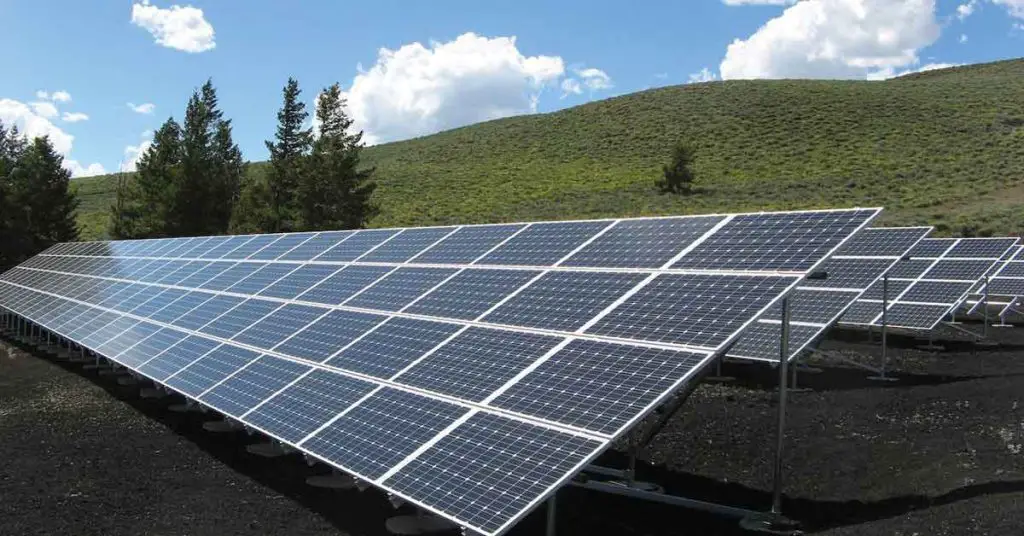
Harnessing Wind and Solar Power
Colorado’s diverse topography and climate conditions create an ideal environment for both wind and solar energy generation. Here’s how homesteaders can tap into these resources:
Embracing Solar Energy
- Optimal Conditions: With over 300 days of sunshine annually in many parts of Colorado, solar power provides a reliable energy source for homesteaders. The high altitude also contributes to more intense sunlight, which can increase solar panel efficiency.
- System Design: Designing a solar power system that meets your homestead’s energy needs requires careful planning. Consider factors like your energy consumption, the orientation and angle of solar panels, and potential shading from trees or mountains.
- Storage Solutions: To ensure a consistent energy supply, especially during the night or on cloudy days, incorporating battery storage is crucial. Advances in solar storage technology have made it more accessible and efficient for homesteaders.
Leveraging Wind Energy
- Wind Potential: Certain areas in Colorado, particularly those at higher elevations or in open plains, experience consistent wind patterns suitable for wind turbines. Small-scale wind energy systems can complement solar installations, providing energy during periods when solar power might be less effective.
- Turbine Selection: Choosing the right wind turbine involves understanding the wind speed and patterns on your property. Small-scale turbines designed for residential use can be a practical addition to homestead energy solutions.
- Permitting and Regulations: Before installing wind turbines, it’s important to check local zoning laws and obtain any necessary permits. Community attitudes towards wind turbines can vary, so consider discussing your plans with neighbors.
Integrating Renewable Energy into Homestead Life
Energy Efficiency First
- Conservation Measures: Before investing in renewable energy, implementing energy conservation measures can significantly reduce your overall energy needs. This includes using energy-efficient appliances, insulating buildings, and mindful energy use.
DIY and Community Projects
- Self-Installation: Many homesteaders in Colorado take pride in installing their renewable energy systems. Resources and workshops are available to those looking to DIY, although professional consultation is recommended for more complex systems.
- Community Microgrids: In some homesteading communities, creating a shared microgrid can be an effective way to pool resources and ensure a stable energy supply for all involved.
Renewable energy offers a path to independence and sustainability for Colorado homesteaders. By harnessing the power of the sun and wind, homesteaders can minimize their environmental impact while securing a self-sufficient energy supply. As technology advances and becomes more accessible, the potential for renewable energy in homesteading continues to grow, promising a greener, more sustainable future for Colorado’s homesteading community.
Wildlife Management and Coexistence
In the breathtaking landscapes of Colorado, wildlife is both a marvel and a challenge for homesteaders. The state’s diverse ecosystems are home to an array of wildlife, from majestic elk and deer to the elusive mountain lion and bear. Coexisting with these wild neighbors requires understanding, respect, and strategic management. This section offers practical advice on living harmoniously with Colorado’s wildlife, ensuring the safety and balance of both homestead life and natural habitats.
Living with Colorado’s Wildlife
Understanding Local Wildlife
- Species Identification: Familiarize yourself with the wildlife species in your area. Understanding their behaviors, needs, and patterns can help in anticipating and mitigating potential conflicts.
- Natural Habitats: Recognize and respect the natural habitats surrounding your homestead. Preserving natural food sources and waterways can help keep wildlife from seeking resources on your property.
Preventive Measures and Deterrents
- Fencing: Proper fencing is crucial for protecting gardens, livestock, and other vulnerable areas of your homestead from wildlife. Electric fencing can be particularly effective for larger animals.
- Secure Livestock and Food Sources: Ensure that livestock are securely housed, especially at night, and that food sources, including pet food and compost, are not accessible to wildlife.
- Trash Management: Secure trash cans with wildlife-proof lids to prevent attracting animals like bears and raccoons.
Coexistence Strategies
- Wildlife Corridors: Where possible, allow for wildlife corridors on your property that enable animals to pass through without interference, reducing the likelihood of them entering your living spaces.
- Non-lethal Deterrents: Utilize non-lethal deterrents such as motion-activated lights or noise makers to discourage wildlife from approaching your homestead.
- Community Efforts: Engage with local wildlife management efforts and community groups to address broader wildlife issues. Collective action can lead to more effective solutions and foster a sense of shared responsibility.
Responsible Wildlife Interaction
- Observation and Enjoyment: While maintaining a safe distance, appreciate the opportunity to observe wildlife. The presence of diverse species is a sign of a healthy ecosystem.
- Reporting and Seeking Assistance: In cases of problematic wildlife encounters or sightings of injured animals, contact local wildlife authorities for guidance and assistance. They can provide expert advice and, if necessary, intervene to manage the situation.
- Educational Opportunities: Use wildlife encounters as educational opportunities for your family and community, fostering a deeper appreciation and understanding of Colorado’s natural world.
Living in harmony with Colorado’s wildlife enriches the homesteading experience, connecting you more deeply with the natural world. By implementing thoughtful wildlife management and coexistence strategies, you can ensure the safety and well-being of both your homestead and the local wildlife populations.
Building a Resilient Homestead
Creating a homestead in Colorado’s varied landscape demands not just determination but also a strategic approach to building and maintaining structures that can withstand the region’s unique climate challenges. This section offers guidance on constructing a resilient homestead, focusing on structural considerations vital for enduring Colorado’s diverse weather conditions and natural landscape features.
Structural Considerations for Colorado’s Climate
Designing for Snow and Wind
- Snow Load Resilience: Given Colorado’s heavy snowfall, especially in the mountainous regions, buildings must be designed to withstand significant snow loads. Steep roofs and strong, reinforced framing are critical to prevent collapse under the weight of snow.
- Wind Resistance: The Rockies and plains can experience high winds, including occasional severe gusts. Structures should be aerodynamically designed to minimize wind resistance, with secure anchoring to prevent damage.
Insulation and Energy Efficiency
- Maximizing Insulation: Effective insulation is paramount in maintaining warmth during Colorado’s cold winters and coolness in the summer. High-quality insulation materials and techniques, including double-glazed windows and insulated doors, are essential.
- Energy-Efficient Heating and Cooling: Considering Colorado’s temperature fluctuations, incorporating energy-efficient heating systems, such as geothermal or solar-powered systems, and passive cooling designs can significantly reduce energy costs and increase comfort.
Adapting to the Natural Landscape
Fire-Resistant Construction
- Wildfire Considerations: In areas prone to wildfires, using fire-resistant materials and designs can protect your homestead. This includes non-combustible roofing materials, fire-resistant siding, and creating defensible spaces around structures.
Water Management and Erosion Control
- Effective Drainage Systems: Proper drainage systems are vital to manage snowmelt and rainwater runoff, preventing water damage and erosion around foundations. Rain gardens and swales can also be integrated to manage water sustainably.
- Erosion Control: In areas with sloped terrain, erosion control measures, such as retaining walls and terracing, can protect the soil and landscape around your homestead, maintaining its stability and fertility.
Building with Sustainable Materials
Choosing Eco-Friendly Construction Materials
- Sustainability in Materials: Opt for locally sourced, sustainable building materials that reduce environmental impact and often perform well in Colorado’s climate. Timber from sustainably managed forests, reclaimed materials, and natural insulators like wool or hemp can be excellent choices.
- Long-Term Durability: Selecting materials that are not only sustainable but also durable and low-maintenance can ensure that your homestead remains resilient against the elements for years to come.
Building a resilient homestead in Colorado requires a thoughtful approach to design, materials, and construction techniques. By considering the unique challenges of Colorado’s climate and landscape, you can create a sustainable, durable, and comfortable homestead that stands the test of time and nature.
Community Involvement and Local Networking
In the journey of homesteading in Colorado, engaging with the local community and establishing a strong network are indispensable strategies that extend beyond mere social interaction. This section delves into the pivotal role of community involvement and networking in enriching the homesteading experience, highlighting practical ways to leverage local knowledge and resources for a thriving and sustainable homestead.

Leveraging Local Knowledge and Resources
The success of homesteading in Colorado’s unique mountainous environment is significantly amplified by tapping into the wealth of local knowledge and resources. This subsection aims to guide homesteaders on how to effectively integrate into the local community and utilize its offerings to enhance their self-sufficiency and resilience.
- The Backbone of Local Expertise: Understanding the terrain, climate, and ecosystem specific to Colorado is crucial for any homesteader. Local farmers, gardeners, and fellow homesteaders possess a treasure trove of adapted knowledge and experience. Engaging with them can provide invaluable insights into successful planting strategies, livestock management, and natural pest control methods that are proven to work in the local context.
- Community Resources and Collaborations: Colorado is home to a myriad of community resources such as agricultural cooperatives, local seed libraries, and homesteading workshops. These platforms offer not just resources but also collaborative opportunities. Participating in seed swaps, joining a community-supported agriculture (CSA) program, or attending local homesteading workshops can significantly enhance your resource base and knowledge.
- Networking for Mutual Support: Building relationships with neighbors and local businesses can lead to a supportive exchange of goods, services, and advice. This mutual support network is invaluable for overcoming challenges and emergencies. Whether it’s borrowing specialized tools, exchanging labor, or sharing in the bounty of a particularly successful harvest, these connections foster a sense of community and shared purpose.
- Local Markets and Economic Integration: Participating in local farmers’ markets and community events not only provides an avenue to sell your produce but also integrates you into the local economic fabric. This involvement supports the local economy and builds your reputation as a reliable and engaged homesteader, opening doors to more opportunities and partnerships.
- Advocacy and Collective Action: Homesteaders in Colorado face unique challenges, from water rights issues to land use regulations. Involvement in local advocacy groups or initiatives can amplify your voice and contribute to shaping policies that support sustainable homesteading and environmental stewardship. Collective action through local forums or councils can lead to more favorable outcomes for the entire homesteading community.
By embracing the ethos of community involvement and local networking, homesteaders in Colorado can significantly enrich their journey towards self-sufficiency and sustainability. These engagements not only provide practical benefits in terms of resources and knowledge but also embed homesteaders within a supportive community fabric, ensuring a more resilient and interconnected approach to mountain living.
Recap: Homesteading in Colorado
Embarking on the journey of homesteading in Colorado is an adventure that promises a fulfilling connection with nature, self-sufficiency, and a sustainable lifestyle. This comprehensive guide has navigated through the essentials of mastering homesteading in the diverse and challenging environment of Colorado, from understanding the legal landscape and embracing high-altitude gardening to managing water rights and integrating renewable energy sources.
Key insights include the critical importance of aligning homesteading practices with Colorado’s unique climate, particularly in water management and high-altitude gardening. Emphasizing sustainable farming and off-grid living underscores the commitment to eco-friendly homesteading, while wildlife coexistence and resilient building practices highlight the need to harmonize with the natural surroundings.
Community involvement has emerged as a cornerstone for successful homesteading, providing a support network, local knowledge, and resources essential for navigating the challenges of mountain living. The shared experiences and collective wisdom of the local homesteading community enrich the journey, fostering a sense of belonging and mutual support.
As you continue to explore the path of homesteading in Colorado, remember that each step taken towards self-sufficiency and sustainability not only benefits your homestead but also contributes to a larger community of like-minded individuals committed to preserving the beauty and resources of Colorado. This guide serves as a foundation, but the journey of learning and growth never ends. Embrace the challenges, celebrate the victories, and continue to seek knowledge and experiences that will enhance your homesteading journey in the majestic landscapes of Colorado.
Disclaimer: The information provided in this article is for general informational purposes only and is not intended to be a substitute for professional advice. The author of this article does not claim to be an expert in homesteading and the information provided should not be relied upon to make decisions about your own homesteading journey. Please do your own research and consult with a qualified professional before making any decisions about your homestead.
Share via:
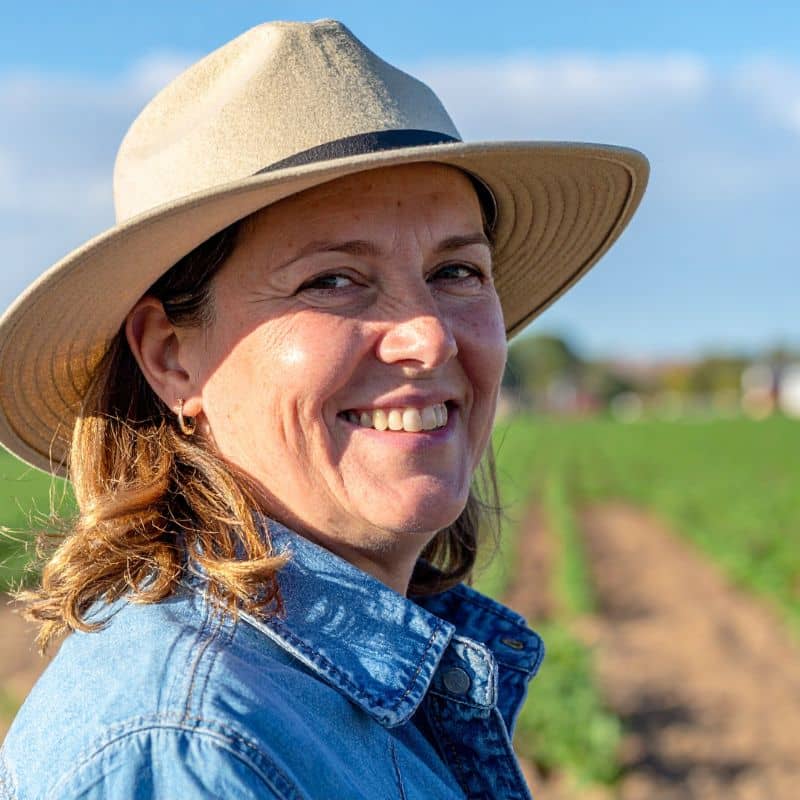
Co-Founder at Homesteading Simple | Horticulture & Sustainable Living Educator | 25 Years in Practical Homesteading


